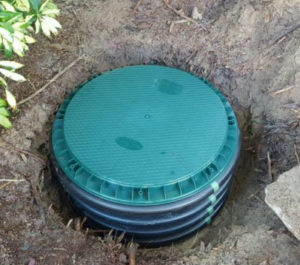When you know exactly where the septic tank is located on your property, it can make it easier to perform regular maintenance. There is going to come a time when your tank is going to need to be inspected, pumped, and maintained. Ignoring inspections and maintenance and waiting until the system has a visible problem will significantly reduce the lifespan of the entire system in addition to creating a potential health hazard.
3 Ways To Locate Your Septic Tank
Even though septic tanks may be difficult to find buried underground, the following steps will help you locate your septic tank easily so you can call in the Clermont FL septic tank professionals to perform regular maintenance.
#1 Visually Search For The Tank
Over the course of a few years, grass growing in your yard can easily conceal the location of the septic tank to the point the entire yard looks identical.
Start walking slowly around the yard and feel if there are any unexpected low or high spots that could be the indication of a drain field or tank.
Typically a tank is placed between 10-25 feet from the house. Since most tanks will not be closer than 5 feet, you can start the visual search from there. Grass growing greener or healthier in one isolated area could be that the tank has leaked and is fertilizing that location.

#2 Perform A Records Search
One of the best ways to pinpoint exactly where the septic tank is on your property is to perform a records search.
If you still have a copy of your original home inspection, there may be an attached document called the “as-built.” This diagram will show exactly how far from the house the septic tank was installed. Even though landmarks on the property may have changed, measurements should still give you the ability to find the exact location.
If you do not have these documents, Lake County may still be in possession of the permit records at the local health department.
 #3 Use Septic Tank Risers
#3 Use Septic Tank Risers
When the septic tank was originally installed in the ground, the company in charge of the process may have included a septic tank riser so their technician can find the tank easily for inspections and maintenance. These risers are installed to make the pumping process easier, allowing the technician to locate the riser and get to work quickly. The septic tank riser is a plastic or concrete pipe that will run vertically from access points or pump-out openings to a few inches above the ground.
Once the tank is located, it is best to call in a septic tank company. Opening the tank yourself is potentially dangerous depending on the condition of the system. There are special tools needed for servicing the tank, and this process is always best left to the experts. Keep a record of the tank location for future reference, so you never have to conduct this search again. It will be helpful for the septic tank team when your next regularly scheduled septic tank pump-out is due.

